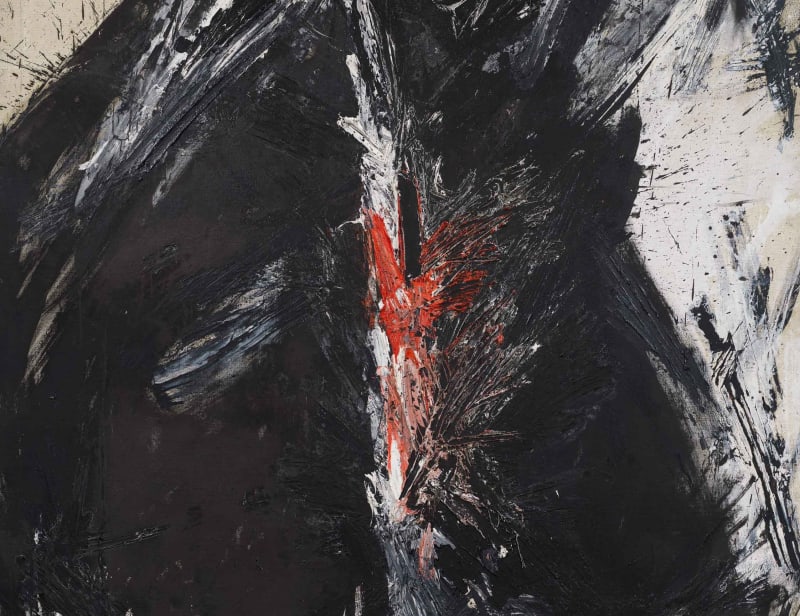Notes on the framework and reality|Historical Text by Rafael Canogar
Rafael Canogar speaks about his works in the excerpt "Apuntes sobre el marco y la realidad" published in 1998 at Real Academia de Bellas Artes de San Fernando at Madrid
Very soon I discovered my path, an aesthetic which had a powerful impact on me: Informalism, action painting which expressed states of mind through automatic gesture. It was the gestures of the subconscious which emerged without passing through the control of reason, releasing a rich world of obsessive, oneiric images which I understand channelled other aspirations beyond the aesthetic; feelings of socio-political conscience which gradually took shape, at the same time as my cultural and artistic training evolved. Informalism was eminently the expression of freedom, of what is unrepeatable and unique, created with direct, spontaneous calligraphy. Eminently intuitive and passionate works, produced with the urgency demanded by time, age and theories. For me, Informalism was something substantial and mystical, self-affirmation and self-fulfilment, in addition to breaking with the formal structures and aestheticizing certainties of the time.
The Spanish plastic awakening —even in such a suffocating atmosphere as Spain in the 50s— was possible thanks to unique circumstances: the appearance of a vanguard which would connect with the deepest Spanish being and feeling, which gave national roots, at the same time as universality to young Spanish painting. It is true that we experienced a sad landscape in this backward Spain which was a stepmother to its creators, but the artistic backdrop, a reference against which to measure ourselves, was unbeatable.
Never was “prehistory” as decisive as it was in the gestation of our “informal” painting. “Artists […] cannot simply “take up” the impetus of the international vanguard […] without severely altering the tempo and the application of that energy. It is to the immediate cultural needs of his society that the modern artist addresses himself’, said the poet Frank O’Hara.
The implicit ambiguity of “informal” language allowed me to express, through a pasty-like writing, the symbolic representation of the elements earth-water, or solid-liquid, which also reflected my way of working. A surface on which is left the memory of the gesture made directly with the hand, a frozen, fossilized imprint: grooves on the surface of the canvas, creating a fabric of signs revealing metaphorical realities, and personal, sometimes erotic obsessions, when this organic fabric is constructed with erogenous allusions, others, with monstrous appearances, because I thought that what is ugly in life can be alive and expressive and therefore beautiful in painting, the great lesson learned from the paintings of Goya.
Rafael Canogar
Source: CANOGAR, Rafael. “Apuntes sobre el marco y la realidad.” Discurso leído por el académico electo Excmo. Señor D. Rafael Canogar el día 31 de mayo de 1998 con motivo de su recepción y contestación del académico Excmo. Sr. D. Antonio Fernández Alba. [Madrid]: Real Academia de Bellas Artes de San Fernando / Gráficas Manero, S.A., 1998, pp. 14-15 [excerpt].
February 26, 2021




